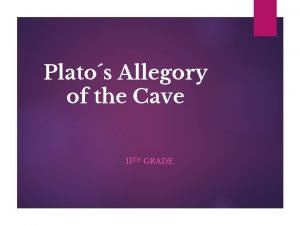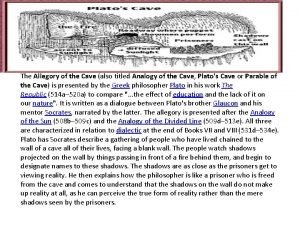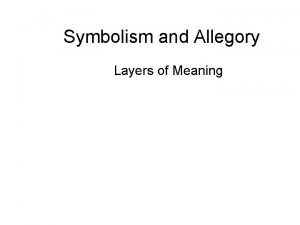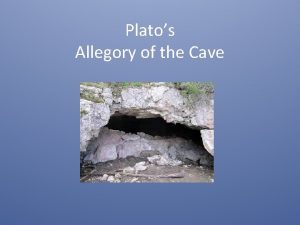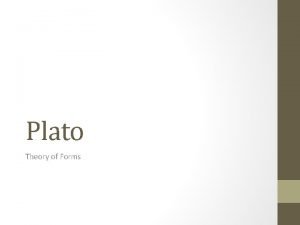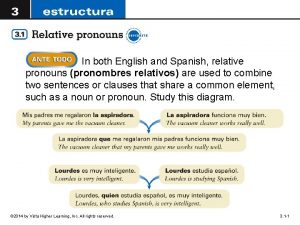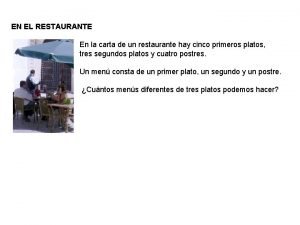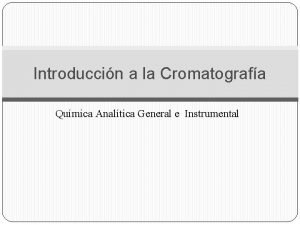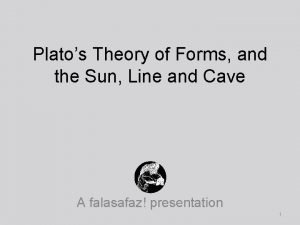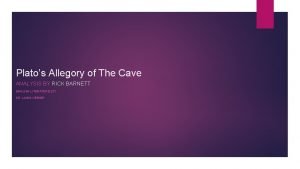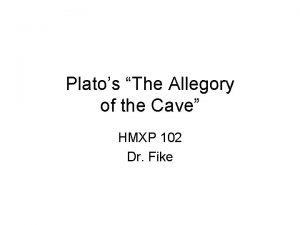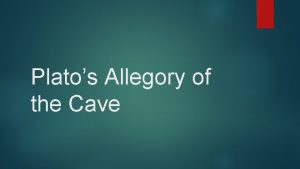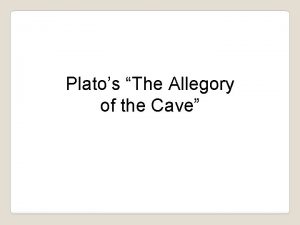Platos Allegory of the Cave Allegory n a













- Slides: 13

Plato’s Allegory of the Cave

Allegory (n. ) a story, poem, or picture that can be interpreted to reveal a hidden meaning, typically a moral or political one.

Allegory differs from analogy, which is a comparison between two things, typically for the purpose of explanation or clarification.

In that sense, an allegory has a comparison at its heart, but an allegory often makes a moral or political point, so its rhetorical purpose may go well beyond mere clarification.

As a literary device, an allegory is a metaphor whose vehicle may be a character, place or event, representing real-world issues and occurrences.

As a rhetorical device, allegory can be used to convey (semi-)hidden meanings through symbolic figures, actions, imagery, or events, which together create the moral, spiritual, or political meaning the author wishes to convey.

In other words, allegory can become a rhetorical strategy, a means by which an author can create a rhetorical effect in the hearts and minds of a particular audience.

Allegory has occurred widely throughout history in all forms of art, largely because it can readily illustrate or convey complex ideas and concepts in ways that are comprehensible or striking to its viewers, readers, or listeners.

Writers or speakers typically use allegories as literary devices or as rhetorical devices that convey (semi-)hidden meanings through symbolic figures, actions, imagery, or events, which together create the moral, spiritual, or political meaning the author wishes to convey.

First attested in English in 1382, the word allegorycomes from Latin allegoria, the latinisation of the Greek ἀλληγορία (allegoría), "veiled language, figurative, "[3] which in turn comes from both ἄλλος (allos), "another, different"[4] and ἀγορεύω (agoreuo),

In classical literature one of the best -known allegories is The Cave in Plato's Republic (Book VII).

This allegory is, on a basic level, about a philosopher who upon finding greater knowledge outside the “cave” of human understanding, seeks to share it as is his duty, and the foolishness of those who would ignore him because they think themselves educated enough. [

 Plato's the cave meaning
Plato's the cave meaning Allegory of the cave and fahrenheit 451
Allegory of the cave and fahrenheit 451 Allegory of the cave comic strip
Allegory of the cave comic strip Peter pan allegory
Peter pan allegory Rhetorical devices in allegory of the cave
Rhetorical devices in allegory of the cave The world of forms
The world of forms Voy a utilizar los platos 1 of 1 me regaló mi abuela.
Voy a utilizar los platos 1 of 1 me regaló mi abuela. Platos típicos de italia
Platos típicos de italia Bailes típicos de la región pacífica
Bailes típicos de la región pacífica Plato beliefs
Plato beliefs Un restaurante ofrece en su carta nueve primeros platos
Un restaurante ofrece en su carta nueve primeros platos Tiempo de retencion ajustado
Tiempo de retencion ajustado Shortest shakespeare sonnet
Shortest shakespeare sonnet Sun
Sun
